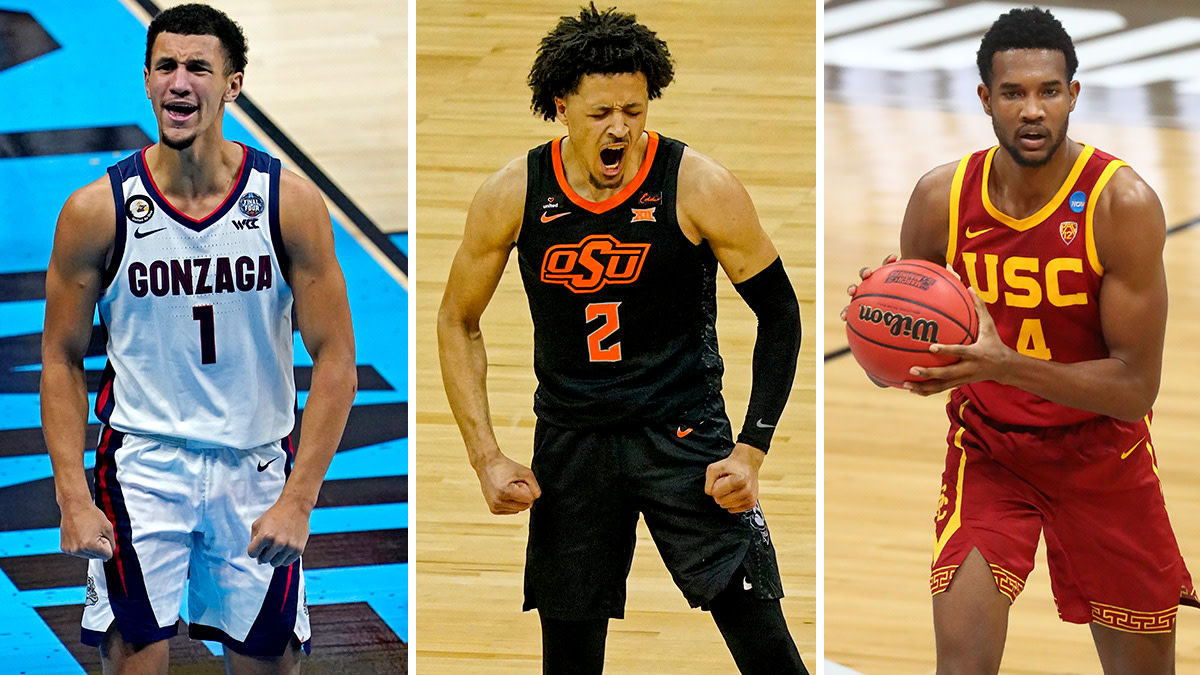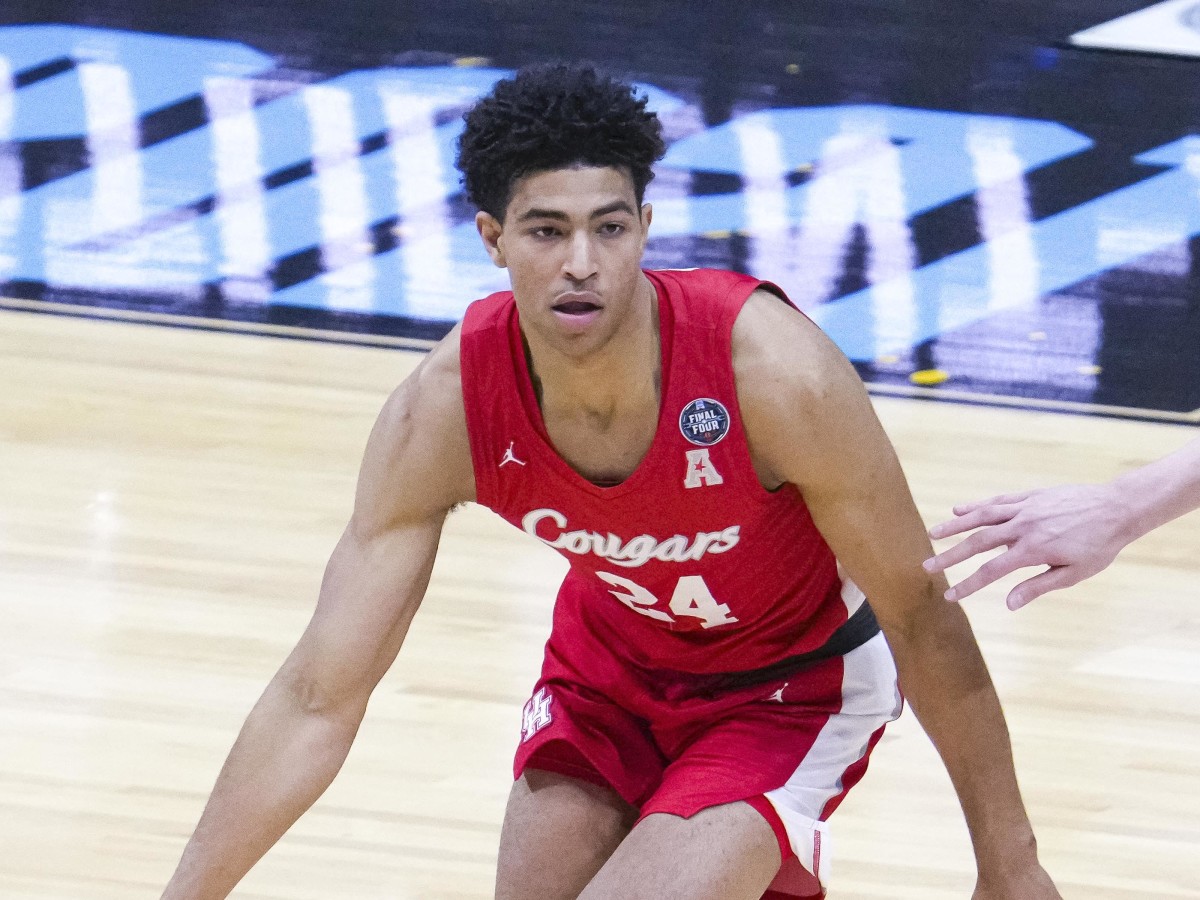NBA Combine Notebook: Cade Cunningham at No. 1 Not a Foregone Conclusion

CHICAGO — Draft season is well underway here at the combine, where the entire NBA has congregated for a busy week of work. The first day of scrimmages was Thursday, following two days of testing and drills, which followed the lottery and the G League Elite camp, in what’s become an annual weeklong summit for league business. In addition to what’s taking place on the floor, there’s a lot going on behind closed doors, and the rumor mill is in full bloom.
We’ll have more coverage to come surrounding the draft moving forward, but here are my notes from the past few days, headlined by some insight on Detroit’s decision process after winning the lottery on Tuesday night.

The question of what the Pistons will actually decide to do with the No. 1 pick has been a hot topic among teams at the combine in the 48 hours following the lottery. At the moment, Detroit’s decision on which player to draft at No. 1 appears less clear-cut than some might have expected. Some years, there’s enough separation between the top prospects that the question of who’s going isn’t a question at all (think 2019, when Zion Williamson was the consensus top guy by a wide margin).
NBA Mock Draft: Projecting All 60 NBA Draft Picks After Pistons Win Lottery
Based on some of the chatter I heard over the course of this season, there was enough love for Cade Cunningham atop the draft that he felt easy to pencil in, regardless of who won the lottery. That no longer appears to be the case. In addition to Cunningham, league sources expect USC’s Evan Mobley and G League Ignite’s Jalen Green to receive serious consideration from the Pistons’ front office, led by general manager Troy Weaver. The strong sense I’ve gotten is that Detroit will explore all its options before committing one way or another, and that the decision on who to take is far from a done deal.
Most of the talk surrounding what might become of the Pistons’ pick has revolved around Weaver, who is regarded by his peers as a sharp scouting mind and a freethinker. He arrived from Oklahoma City after the 2020 season, overseeing a successful draft that landed Isaiah Stewart and Saddiq Bey in the teens and Killian Hayes, a Weaver favorite (who missed a large chunk of the season due to injury), at No. 7. It’s relevant to note that Weaver is known as a contrarian, preferring to examine all sides of a decision with disregard for consensus thought. Weaver is also known as a believer in the value of bigs in the modern NBA, and was widely thought to be bullish on James Wiseman entering last year’s draft. Some around the league think he may ultimately favor Mobley’s versatility and defensive prowess. Others have pointed to Green, a high-upside scorer, as an ideal fit for Detroit’s roster. Nobody knows exactly what they’re thinking yet, but many in the know have cautioned to expect the unexpected.
None of this is meant as a disservice to Cunningham, who has ranked as SI’s top prospect from rail to rail this season, and is the player I’d personally prefer. He can certainly fit on court with Detroit, with a highly malleable game that revolves around his uncanny ability to make positive decisions with the ball, and a much-improved jumper. And he may well end up the No. 1 pick, whether it’s the Pistons, or, speculatively, if Detroit finds a pathway to trading back and still landing the player it wants. Weaver and his front office hold the cards atop the draft here, and it’s a situation the rest of the NBA will monitor closely in the days and weeks to come.
According to league sources, the Cavaliers have begun to explore trade options involving leading scorer Collin Sexton. Sexton, 22, is extension-eligible this summer, averaged 24.3 points per game last season, and appears likely to seek a maximum contract. Also eligible for an extension is 23-year-old center Jarrett Allen, who is also expected to command a lucrative deal from Cleveland. There’s belief around the league that Cleveland prefers to move on from Sexton, rather than sign him to a deal that would greatly inhibit their flexibility moving forward. The Cavs hold the No. 3 pick in the draft, and could end up selecting another guard, which could further expedite the process of a trade.
As for the on-court portion of the combine, scrimmages began on Thursday and will conclude on Friday, with a series of agency-run pro days scheduled by the NBA in the days that follow. Two games took place Thursday afternoon, with several players beginning to set themselves apart from the group with strong showings. The primary notables from day one, as I saw it, are as follows.
Josh Primo, Alabama
Primo is currently the youngest draft-eligible prospect and doesn’t turn 19 until December, making him a clear curiosity for teams coming into combine week, and he’s acquitted himself well thus far. Primo looked impressive in drills Wednesday and carried that momentum into Thursday’s games, showcasing a level of confidence playing on the ball and strong defensive ability that wasn’t always evident over the course of his freshman season. While not an exceptionally explosive athlete, Primo measured at 6' 4" barefoot with a 6' 9.25" wingspan and tied with Moses Moody for biggest hands among guards who measured at the combine.
He finished with just seven points and six rebounds on Thursday, but Primo’s feel and skills relative to his age, coupled with his obvious comfort level playing in this setting against older players, has begun to separate him from the pack. His stock is inching closer to the first round as an attractive development project, and right now there’s a real chance he could sneak into the 20s. If he returns to school, Primo appears on track to be a first-rounder in 2022, but there’s a case to be made for simply taking him now.
Jason Preston, Ohio
Preston was the standout in the day’s second game, putting together an exceptional stretch of play in the second half and standing out as the best passer on any of the four combine teams. He finished with 10 points and just one assist, but played a huge role in facilitating for his team, and his unselfishness was contagious. This year’s draft class is relatively thin on quality point guards, and Preston’s maturity and pass-first approach was a real separator from most of the other guards we saw take the floor Thursday.
It’s been a positive few days at the combine for Preston overall, as he’s flashed underrated athletic ability, played active defense, and shot the ball better than some teams expected in drills. He thinks the game a step or two ahead of his peers, and has the size and skill level to profile pretty cleanly as a capable NBA backup. There’s some untapped upside if his shot and thin frame continue to improve. Preston is likely playing his way into a Top 40 selection at this rate, and will draw interest in the late first round.

Quentin Grimes, Houston
Grimes was also terrific on Thursday, joining Preston, Josh Christopher and others on an overly stacked combine team that boatraced their opponents and won the second game by 40 points. I’ll accept culpability for ranking him far too low in the past, relative to where his perception lies around the league. Grimes has good size for a two-guard and has come a long way since his days at Kansas, emerging as a reliable shooter and capable ball-mover, and he made a number of quality reads Thursday. He finished with 12 points, six rebounds and three assists, and did a great job of playing unselfish and fitting in. Utilitarian, well-rounded guards like Grimes are useful commodities in today’s NBA, and at this rate, he’s likely played his way into a spot in the second round.
Bones Hyland, VCU
Hyland was terrific in the first game of the day, drawing rave reviews for his effort level and lighting up the first 10 minutes with a trio of three-pointers. He finished with 17 points and four assists, effectively showcased his ability to create his own shot, and did well in creating space for himself off the dribble. To his credit, when his shot stopped falling, he was unselfish and worked to share the ball and accommodate his teammates. Hyland has a reputation as a bit of a gunner, and his defense isn’t particularly stellar, but his performance Thursday certainly helped his standing in the minds of NBA teams, who were curious to see him against better competition. While he’s not an elite-level athlete, and there’s a narrow margin for bucket-getters when moving up to the NBA level, Hyland deserves to be drafted and should be in fairly good shape moving forward.
The vast majority of executives I spoke with were pleased with this year’s new combine setup, with the event moving to a more central location at Wintrust Arena. Players took part in testing on Tuesday and Wednesday in addition to a series of drills that placed them in game-like situations, a much better showcase for prospects than in years past, when the NBA held drills and scrimmages over just two days and the schedule (and venue) often felt cramped. The strong sense I get is that the event should remain at Wintrust moving forward, with players and league personnel staying at a convenient, central location that greatly reduced the amount of type typically wasted traveling around the city.
Wrapping up with some minutiae: as it turns out, the Pistons and Cavaliers got lucky twice on lottery night. The way the lottery works is that the league draws combinations for the first four slots in order, with any team repeats being thrown out and re-drawn. According to a source with knowledge of the proceedings, the NBA had to draw six times for four slots, with the order being Detroit, then Houston, then Detroit again, then Cleveland, Cleveland again, and finally, Toronto. Conspiracy theorists, do your worst.
More NBA draft coverage:
